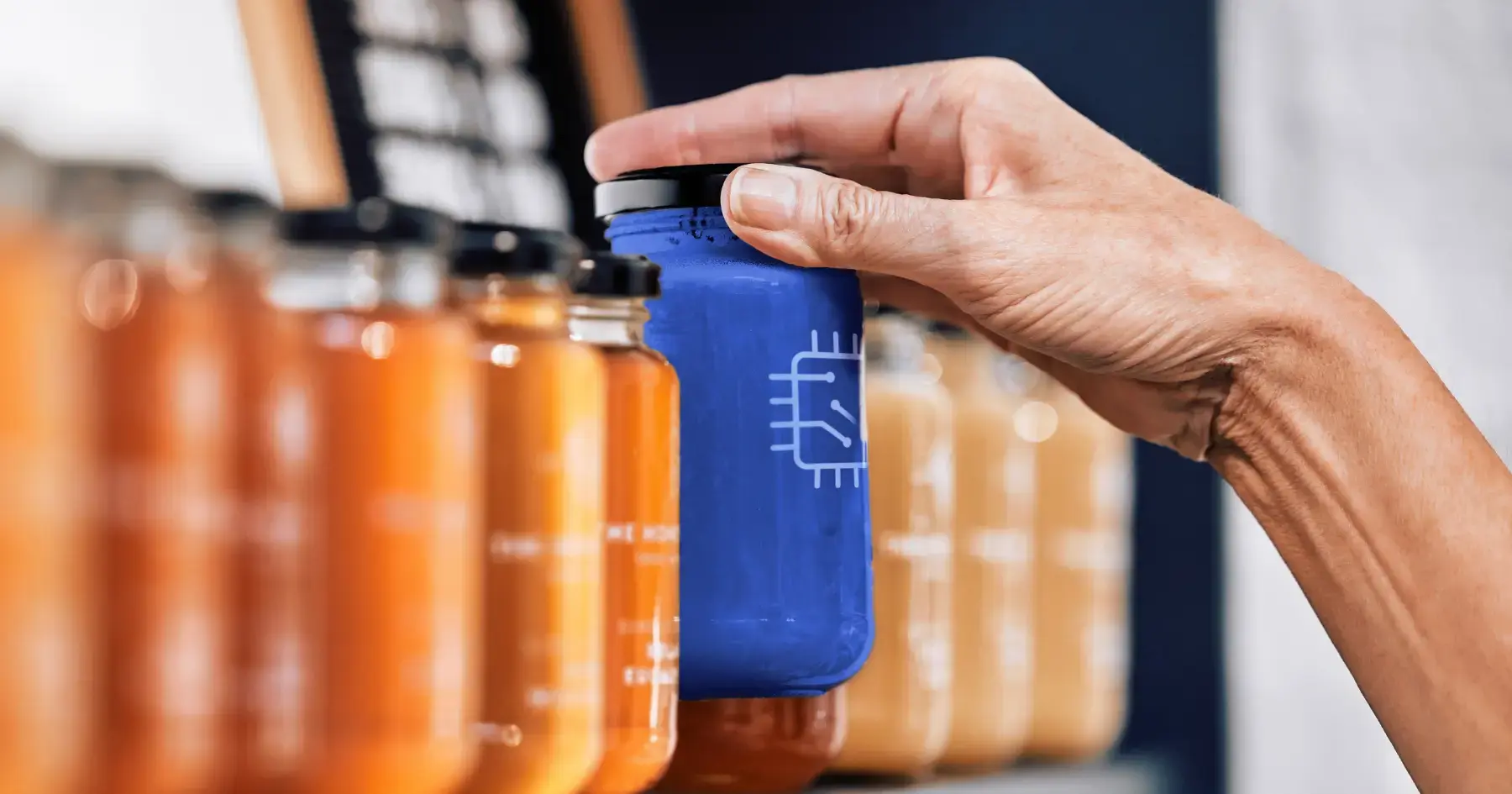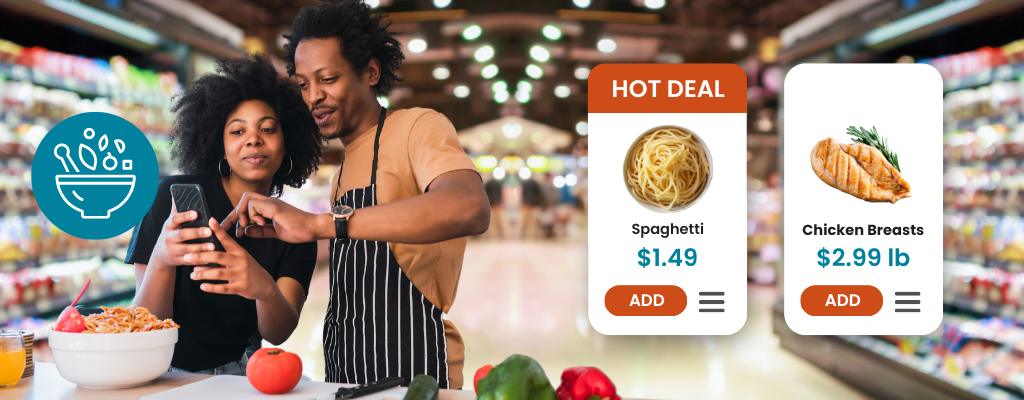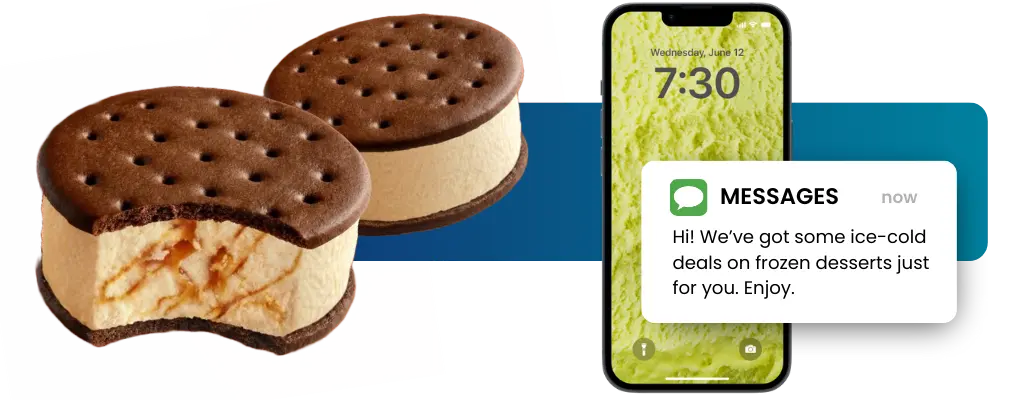
How Grocery Technology Makes Competing With Big Retailers a Reality
Shifting your perspective can redefine your potential.
By rethinking their approach to competition with larger retailers, grocers can more effectively counter the rising dominance of mass merchants in the grocery sector.
Too often, this competition is reduced to a single factor: price.
I don’t want to diminish the importance of price. We’re seeing its significance play out in real-time right now with deep discounts on annual memberships—tied to reduced delivery fees—driving online grocery sales to record levels.
There’s no doubt that competitive pricing has helped mass merchants attract value-driven customers and grow their market share.
But pricing isn’t the only tool in their arsenal.
Large retailers have excelled in other critical areas—improved customer engagement, seamless omnichannel experiences, and operational efficiency—by playing to their greatest strength: scale and resources.
Regional grocers can—and should—do the same by leveraging their own greatest strengths: their place in the community, their reputation for personalized service, and their commitment to quality. These are the very qualities that have earned regional grocers the trust and loyalty of their customers for decades.
But how can smaller grocery stores maximize these strengths in a way that rivals the investments of larger competitors?
Technology: The Advantage Enhancer
The answer lies in technology.
While regional grocers may not have the massive budgets of their larger competitors, they can implement targeted, cost-effective solutions that enhance their biggest advantages. Grocery technology empowers grocers to elevate customer engagement, create seamless omnichannel experiences, and optimize operations to rival even the biggest players—all while staying true to what sets them apart.
What’s more, technology doesn’t just enable these strategies; it helps grocers offset the costs of implementing them. With the right tools, regional grocers can adopt sustainable, scalable solutions that turn challenges into opportunities for growth.
By leaning into technology, grocers can shift the narrative.
Instead of trying to compete on price, they can excel in areas where they’re uniquely positioned to win—strengthening their connections with customers and securing their place in the grocery market.
The Grocery Industry Runs on Customer Engagement

Every month, US eGrocery sales data from Brick Meets Click makes one thing abundantly clear: engaged customers drive growth.
Larger retailers have mastered customer engagement by investing heavily in first-party fulfillment methods—both curbside pickup and home delivery. This isn’t just about convenience—it’s strategic.
By managing their own fulfillment, the big stores gain control over two critical elements of their business:
- Customer Experience: They ensure every interaction meets their standards, from the quality of order fulfillment to the ease of reordering.
- Customer Data: First-party fulfillment allows them to collect valuable insights on consumer behavior, shopping habits, preferences, and buying cycles—data that fuels personalized marketing and deeper engagement.
How Regional Grocers Can Take Control
Regional grocers can achieve these same outcomes by moving customers away from third-party marketplaces and toward their own fulfillment methods.
This shift, ideally toward pickup, provides multiple advantages:
- Data Collection: When customers use your fulfillment services instead of a third-party app, you gain direct access to first-party data.
- Customer Experience Control: You decide how orders are prepared, delivered, and communicated, ensuring every touchpoint reflects your brand values.
- Enabling Personalization: With technology to analyze customer data, you can create a highly effective personalized approach that matches what larger retailers are doing—and goes beyond it.
The Power of Personalization vs. Traditional Methods
Once grocers have control over customer data, they can replace outdated engagement methods—like expensive, generic weekly circulars—with a modern, targeted approach.
Consider the difference:
- Weekly Circulars: Created at great expense, these flyers—a tradition in grocery retail—are designed for broad, regional audiences and often fail to align with individual customers’ needs.
- Personalized Engagement: Technology allows you to deliver tailored offers, customized product recommendations, personal digital coupons, and reminders through mobile apps timed to a customer’s purchase cycle.
Instead of mailing every household the same flyer (with its high production and distribution costs), grocery retailers can use artificial intelligence and machine learning to comb through consolidated customer data, and send a discount on fresh berries to a family that buys them weekly or recommend a new organic snack to a customer who prioritizes healthy eating.
This reduces costs and drives engagement by addressing each shopper’s preferences directly.
Playing to Your Strengths
Personalized engagement doesn’t just replicate what larger retailers are doing—it plays directly into the strengths of regional and independent grocers.
Where larger retailers often struggle to deliver individualized service at scale, local grocers excel at high-touch, personalized customer care. By combining technology with this inherent strength, regional grocers can create a grocery shopping experience that reminds customers why they prefer to shop local:
- Personal Connection: A personalized offer feels like a thoughtful recommendation, not a mass-market promotion.
- Community Focus: Highlighting local products and understanding customer preferences fosters a sense of belonging and trust.
- Exceptional Service: Technology bridges the gap between digital convenience and the in-store experience, creating a seamless journey that larger retailers can’t easily replicate.
By investing in personalization, regional grocers can connect with customers on a deeper level, building loyalty and engagement that lasts. This approach doesn’t just match the competition—it differentiates regional grocers in a way that aligns with their core strengths, making an extremely strong case for why shopping local is better.
Bring the In-store Shopping Experience Online

While personalization helps grocers connect with individual customers, a seamless omnichannel experience ensures consistency across every interaction.
Today’s shoppers expect the same level of service and convenience whether they’re browsing online, ordering through an app, or visiting a physical grocery store. Bridging these channels is critical to staying competitive.
Larger retailers have met this expectation by creating ecosystems where customers move effortlessly between in-store and online shopping experiences—converting one-time transactions into ongoing engagements.
For grocers, implementing an omnichannel strategy isn’t about replicating what big retailers do; it’s about adapting their own strengths to create something even better. Again, it comes down to reframing how the competition is viewed.
Local grocers have an edge here, thanks to their long-standing reputation for personalized, high-touch in-store service. With the right technology, they can extend that exceptional service to the digital space, delivering an omnichannel experience that resonates with customers.
How Grocers Can Create a Seamless Shopping Experience
Omnichannel success in grocery retail relies on integrating touchpoints across in-store and digital experiences. Here’s how grocers can achieve it:
- Unify Customer Data: By consolidating data from every touchpoint—whether it’s an in-person interaction or an online order—grocers can offer consistent, personalized recommendations and promotions. This creates a cohesive grocery shopping experience that feels tailored to the customer.
- Personalize Every Step: As we mentioned in the previous section, technology enables grocers to bring their customer-first approach to digital channels. From loyalty rewards to personalized shopping lists, every interaction can reflect the same care and attention customers receive in-store.
- Streamline Fulfillment: Flexible options like in-store pickup, same-day delivery, and even ship-from-store capabilities are essential. These services not only meet customer expectations but also reinforce the grocer’s reputation for convenience and reliability.
When implemented effectively, this strategy doesn’t just replicate what larger retailers are doing—it amplifies what regional grocers already do best.
Imagine a shopper who adds items to their cart online but prefers to pick them up in-store. Technology ensures their preferences, loyalty points, and even personalized promotions carry over seamlessly between platforms. This consistency deepens their connection to the brand.
While a big retailer might offer similar conveniences, it’s often at the expense of personal connection. When local grocers leverage technology to provide a connected, hassle-free shopping experience, it feels thoughtful, engaging, and distinctly local.
Operational Efficiency is How Grocery Stores Find Profitability
Delivering a seamless omnichannel experience requires operational excellence, particularly in fulfillment processes like order picking and packing.
These tasks, while essential, can be resource-intensive and quickly eat into margins if not managed efficiently. Rising operational costs only add to the pressure on grocers to streamline processes without compromising accuracy or speed.
Here’s the good news: technology isn’t just about meeting customer expectations—it’s about making operations easier and more profitable.
When grocers implement an eCommerce platform, the surrounding operations must remain efficient and manageable. Fulfillment, after all, isn’t just about last-mile delivery; it includes the in-store processes that assemble orders, which can have a huge impact on cost and customer satisfaction.
How Larger Retailers Optimize Fulfillment
Big retailers have mastered fulfillment by offering customers a wide range of options, from curbside pickup to same-day delivery and ship-to-home.
These services cater to a broad demographic range, capturing cost-conscious shoppers and those willing to pay a premium for convenience. This flexibility enhances customer satisfaction and increases order frequency.
For regional grocers, however, replicating this breadth of service isn’t feasible. Instead, they should focus on optimizing the fulfillment options that align best with their strengths—most often, pickup.
Pickup services drive customers to the store, where grocers can leverage personalized service, convenient locations, and local offers.
This approach not only saves on costly last-mile delivery but also reinforces the unique value regional grocers bring to their customers.
Strategies for Streamlining Fulfillment
To maximize the benefits of pickup and other fulfillment options, grocers must ensure their operations are as efficient as possible. By leveraging automation technology, they can streamline processes like picking and packing, making fulfillment faster, more accurate, and more cost-effective.
Here are three ways new technology can enable grocers to optimize fulfillment operations:
1. Define and Measure Operational Goals
Tracking key performance metrics is vital for improving fulfillment processes.
- Digital Dashboards: Real-time dashboards allow grocers to monitor KPIs like late orders, units picked per hour (UPH), out-of-stock (OOS) rates, and substitution rates at a glance.
- Automated Insights: Automated reporting eliminates manual errors and saves time, offering actionable insights for continuous improvement.
- Team Alignment: Scorecards and mobile updates keep grocery store teams aligned with goals, ensuring accountability and rapid response to challenges.
This data-driven approach to grocery retail ensures that bottlenecks are identified, efficiency is improved, and high performance is maintained.
2. Optimize In-store Routing
Efficient routing minimizes time spent navigating aisles, speeding up the fulfillment process.
- Smart Picking Tools: Handheld devices or apps map the most efficient routes through the grocery store, saving time and reducing errors.
- Inventory Updates: Real-time inventory management systems prevent pickers from wasting time on out-of-stock items, suggesting substitutions instantly.
- Labor Savings: Improved routing reduces unnecessary steps, lowering labor costs while boosting productivity.
Technology-driven routing tools make picking faster and more accurate, improving both efficiency and employee satisfaction.
3. Multi-order and Zone Picking
Advanced strategies like multi-order and zone picking increase fulfillment capacity.
- Batch Picking: Technology groups orders with shared items, reducing trips and increasing efficiency.
- Zone Assignments: Dividing the store into zones streamlines picking, allowing staff to focus on smaller sections for quicker completion.
- Prioritized Workflows: Automated systems prioritize time-sensitive orders, ensuring timely completion and happy customers.
These tech-enabled strategies let grocers handle more orders without sacrificing speed or accuracy.
The Role of Technology in Fulfillment Excellence
Technology streamlines online grocery fulfillment, reducing costs and making operations more scalable.
By defining and measuring operational goals, optimizing in-store routing, and enabling multi-order and zone picking, grocers can achieve significant efficiency gains while improving accuracy and speed.
These optimizations don’t just reduce costs—they also enhance the customer experience by ensuring orders are accurate, timely, and seamless.
Offsetting Costs with Digital Retail Media

Even with streamlined operations, the cost of adopting new technologies can feel daunting for regional grocers.
Research from last year has shown that while many grocers understand the challenges they face and recognize that smart technology offers viable solutions, the perceived expense of expanding their tech stack often prevents them from implementing these tools.
Fortunately, technology itself provides a way to offset these costs through digital retail media—a strategy that transforms grocers’ digital platforms into revenue-generating assets. By monetizing their eCommerce platforms, grocers can turn a potential cost center into a profit engine.
The Effectiveness of Retail Media as a Revenue Stream
Retail media has proven to be an incredibly effective way to offset expenses.
Larger retailers like Walmart have become early adopters and demonstrated the power of this strategy by using their digital real estate to generate substantial revenue.
Through banner placements, sponsored product listings, and targeted ads, Walmart enables consumer packaged goods (CPG) brands to advertise directly to customers as they shop online. This allows Walmart to recoup costs from discounts and advanced technology investments while simultaneously strengthening its eCommerce offerings.
Earlier, we mentioned how some of the bigger players in eGrocery have enticed more online grocery shopping through membership discounts tied to reduced delivery fees. Grocery industry experts speculate that these offers are able to be extended due to the cost-offsets provided by retail media.
How Retail Media Works
With access to a retail media network, grocers can partner with CPG brands to deliver targeted advertising directly to shoppers. For instance, a shopper browsing for bakery items on a grocer’s app might see a sponsored promotion for a new line of cookies. These targeted placements benefit both the grocer and the CPG brand, providing value to engaged customers while generating additional revenue.
This approach not only helps grocers recoup their technology investments but also strengthens relationships with suppliers and advertisers. Retail media turns digital platforms into powerful tools for driving growth, ensuring that technology adoption becomes a self-sustaining investment.
With these strategies in place, grocers can effectively compete with big retailers without needing massive budgets—a reality made possible by smart, strategic use of technology.
Why Regional Grocers Are an Attractive Option for CPG Brands
While larger retailers have scale on their side, regional grocers offer something equally valuable to CPG brands: a highly engaged, loyal, and localized customer base.
According to recent analysis from EMARKETER, regional retail media networks provide advertisers with closer connections to consumers—an advantage that larger networks often struggle to replicate.
Here’s why regional grocers are uniquely positioned to succeed in retail media:
- Loyal Shoppers: Regional grocers often have deeper ties to their communities, fostering trust and loyalty among customers who are more likely to engage with relevant ads.
- Localized Knowledge: Advertisers can tap into grocers’ understanding of local preferences, tailoring promotions that resonate with specific audiences.
- Higher Engagement Rates: Targeted campaigns delivered through regional grocers’ platforms often outperform broader initiatives by reaching shoppers at the point of purchase.
With professionally managed retail media solutions, grocers don’t need a dedicated sales or campaign management team to succeed. These platforms handle the logistics, making it easy to launch and scale retail media campaigns.
Technology Levels the Playing Field

At the beginning of this article, I encouraged regional grocers to reframe how they view the competition.
Rather than seeing market share as a battle over price, consider it an opportunity to excel in areas where technology aligns perfectly with the inherent strengths of grocers.
Competing with the vast resources of big retailers might seem daunting at first, but technology levels the playing field, transforming what once seemed like an insurmountable underdog status into a realistic and strategic opportunity.
Grocery technology empowers grocers to maximize their unique strengths: delivering highly personalized experiences that resonate with local customers, bridging the gap between digital and in-store shopping, and streamlining operations to maintain profitability. With retail media networks providing a self-sustaining revenue stream, these strategies allow grocers to compete not by mimicking big retailers, but by doubling down on what makes them special.
Ultimately, regional grocers don’t need to outspend their larger competitors—they can outsmart them.
By leveraging technology to prioritize efficiency, customer loyalty, and value-driven engagement, regional grocers can carve out a competitive edge in today’s grocery market.
Mercatus: Your Technology Partner for Success
As SVP of Retail Operations at Mercatus, I’ve made it my mission to ensure that needs of grocery retailers informs the work we do and the solutions we offer.
At Mercatus, we’re more than just a grocery tech company—we’re your technology partner. That means offering ongoing guidance and support, helping you leverage your unique strengths to grow your grocery business in a competitive marketplace.
I believe Mercatus can help you reclaim your market share from larger retailers by empowering the operations of your grocery stores in four key ways:
- Engaging Customers Through Personalization: Deliver tailored experiences that build loyalty and resonate with your shoppers.
- Exceeding Expectations with Seamless Omnichannel Experiences: Connect every interaction, online and in-store, to create a unified journey for your customers.
- Streamlining Operations for Profitability: Optimize your fulfillment processes to ensure eCommerce is efficient and cost-effective.
- Offsetting the Cost of Technology Investments: Leverage digital retail media to transform your digital platform into a revenue-generating asset.
And I want you to believe it, too.
Contact us today to discuss how these tech-driven strategies can be tailored to your specific grocery operations, so you can compete effectively, win back market share, and build lasting customer loyalty.
 All-new AisleOne
All-new AisleOne
 Integrations
Integrations
 Newsroom
Newsroom
